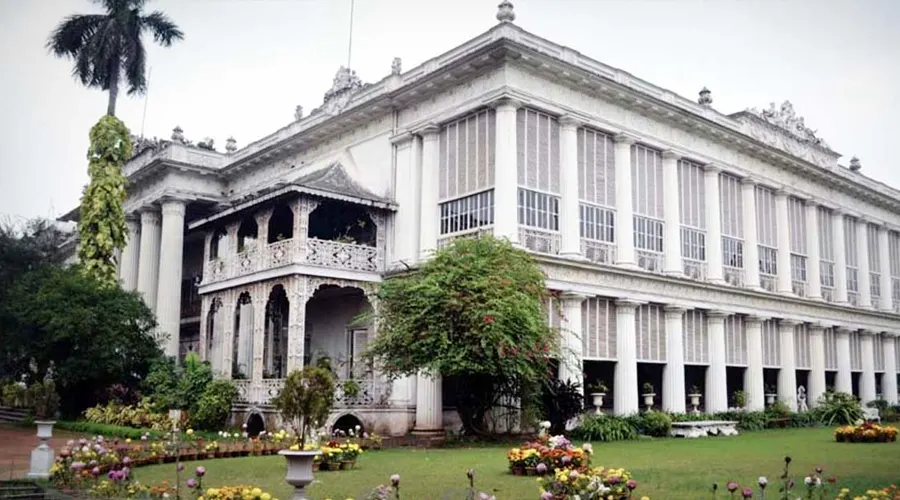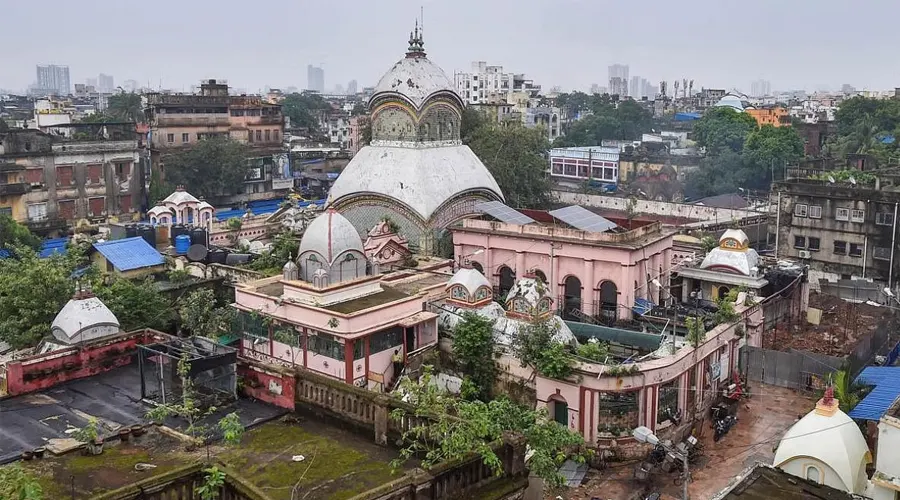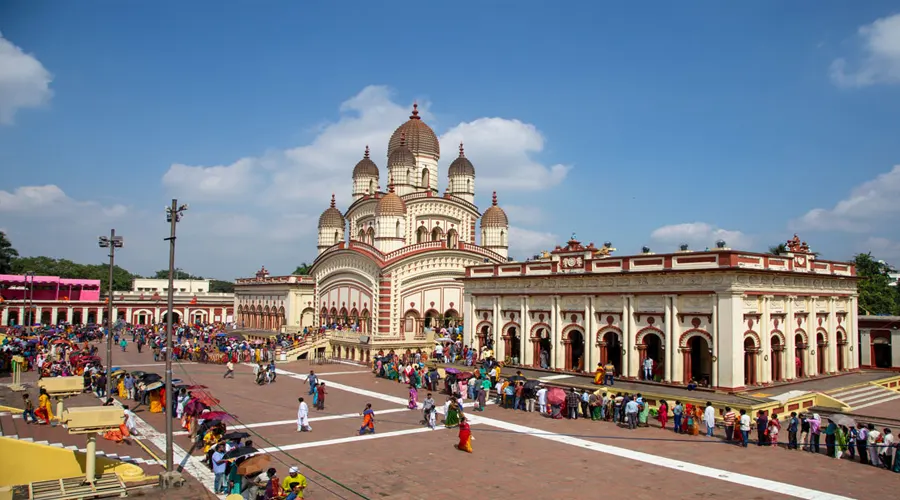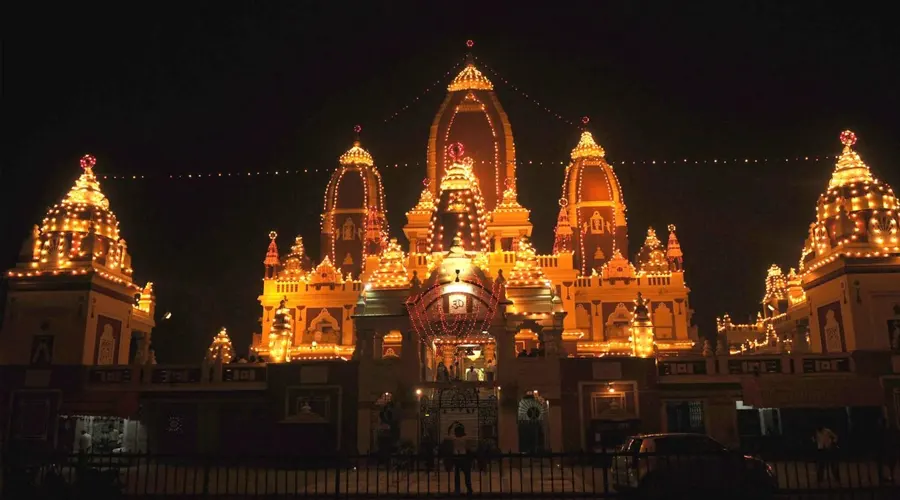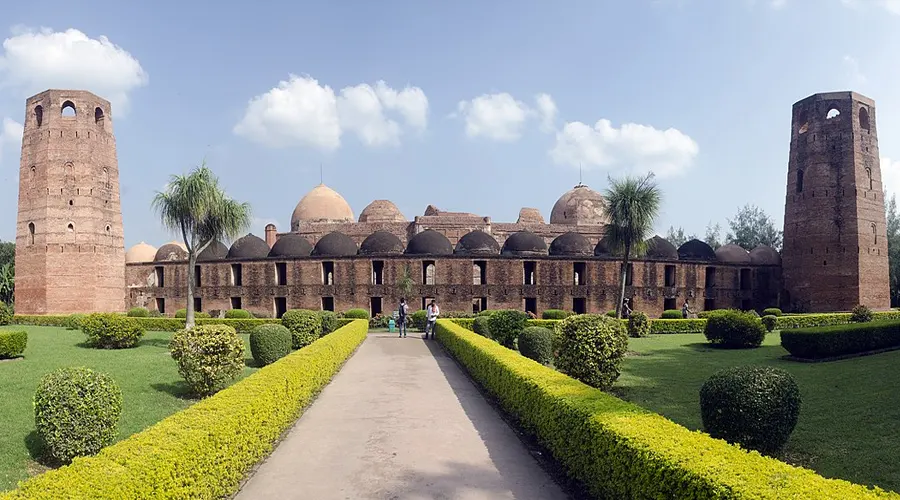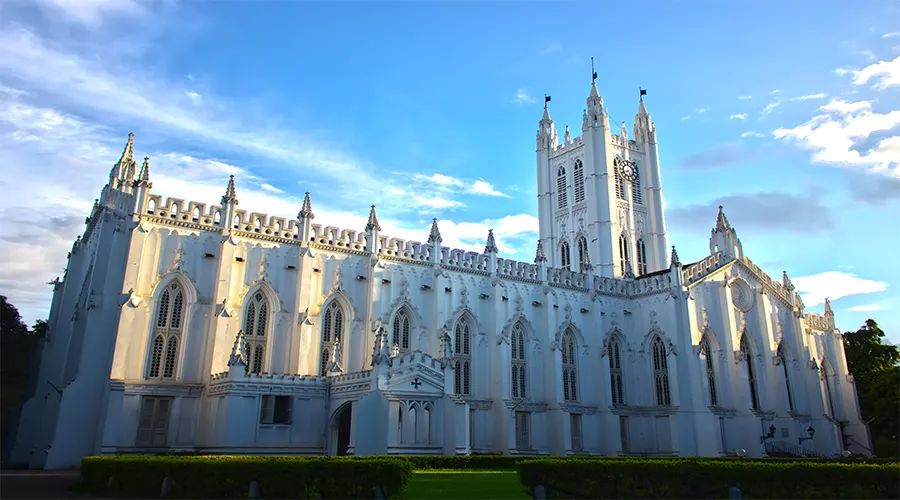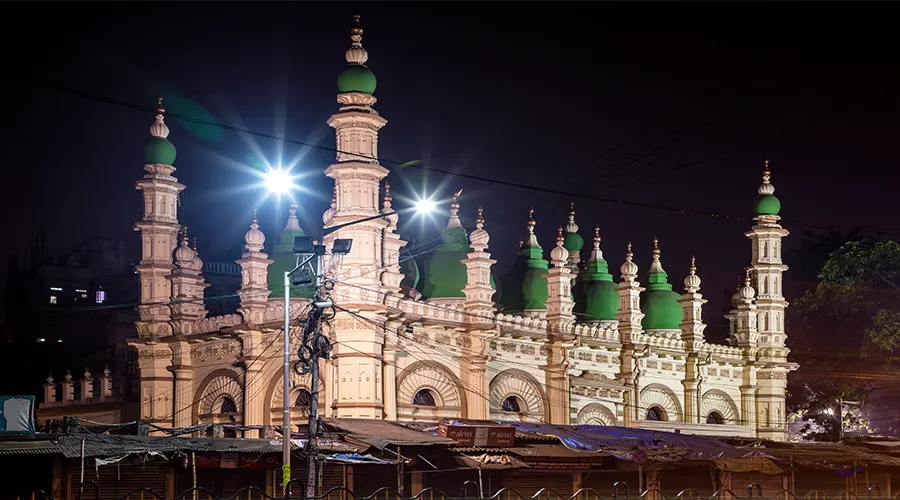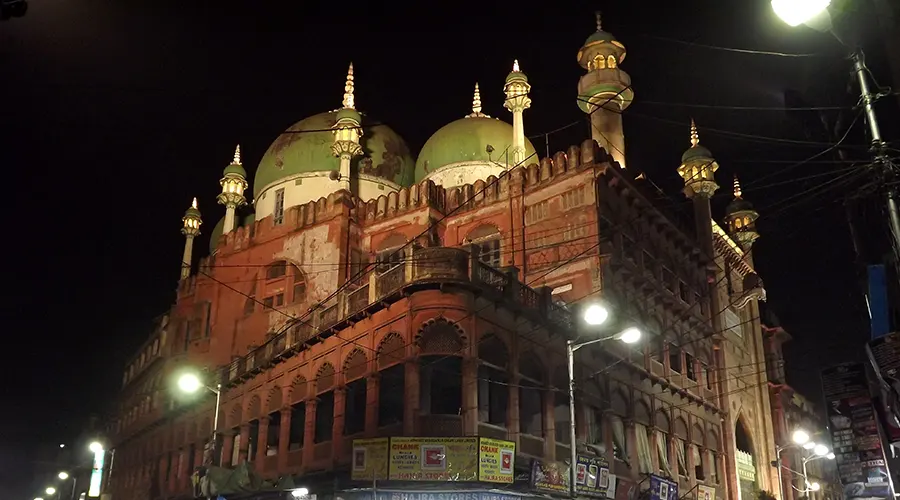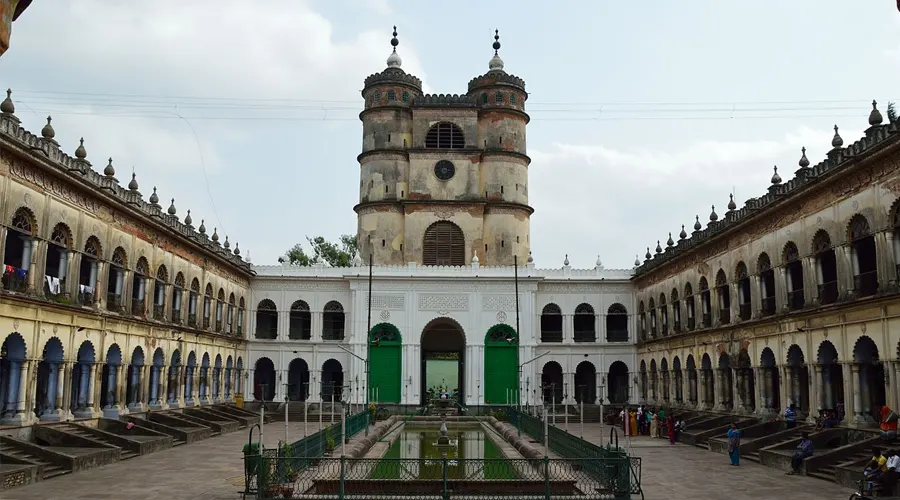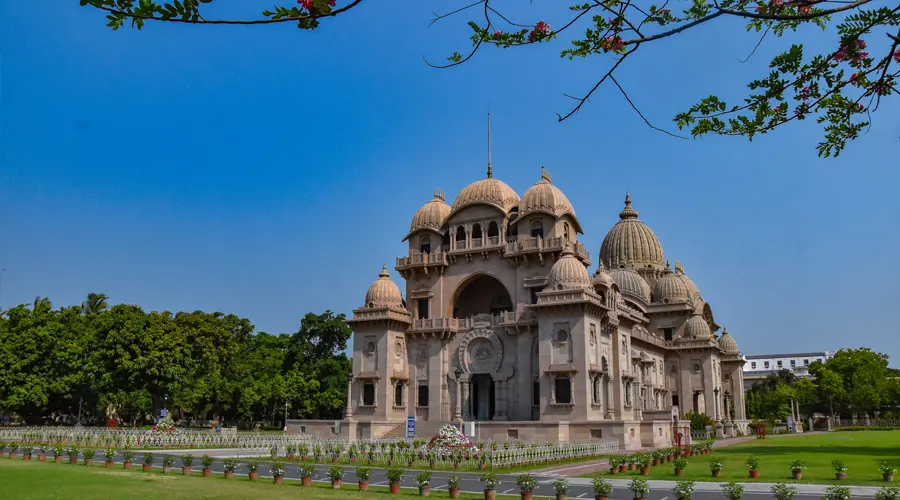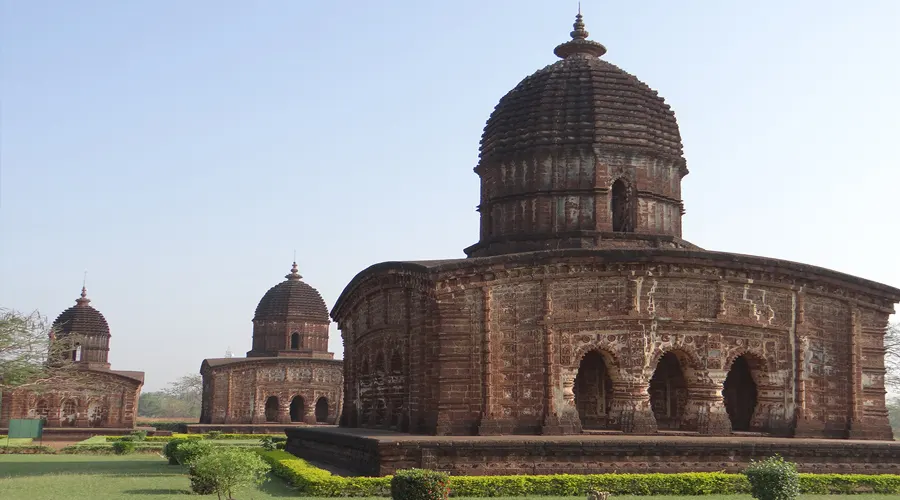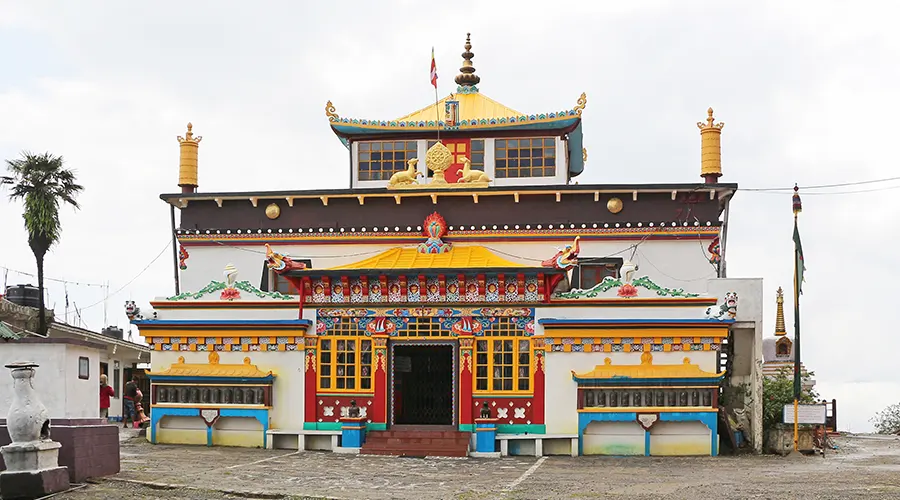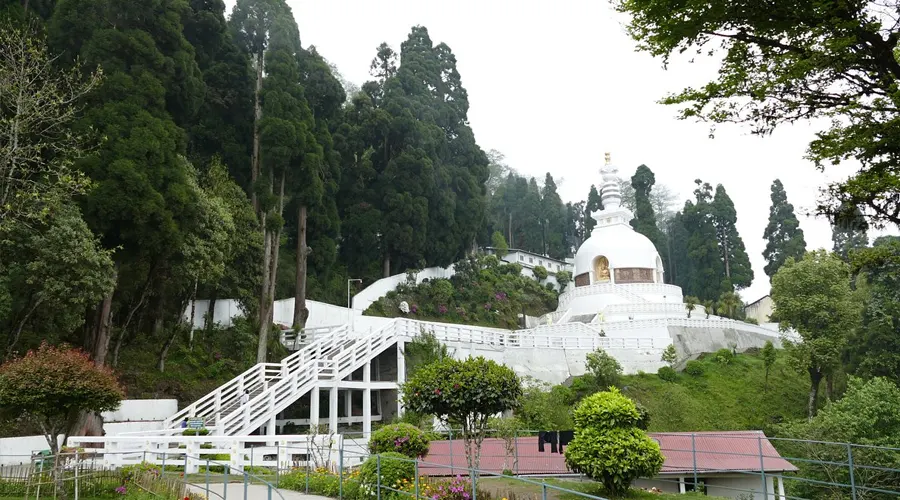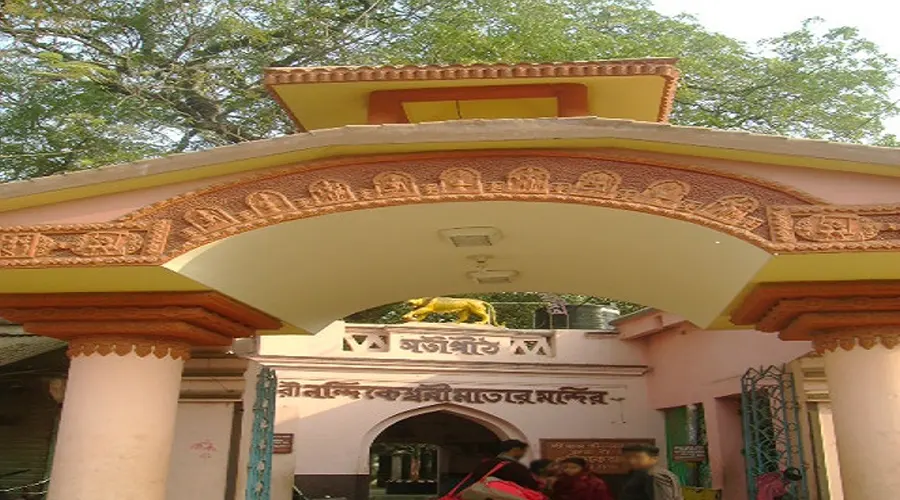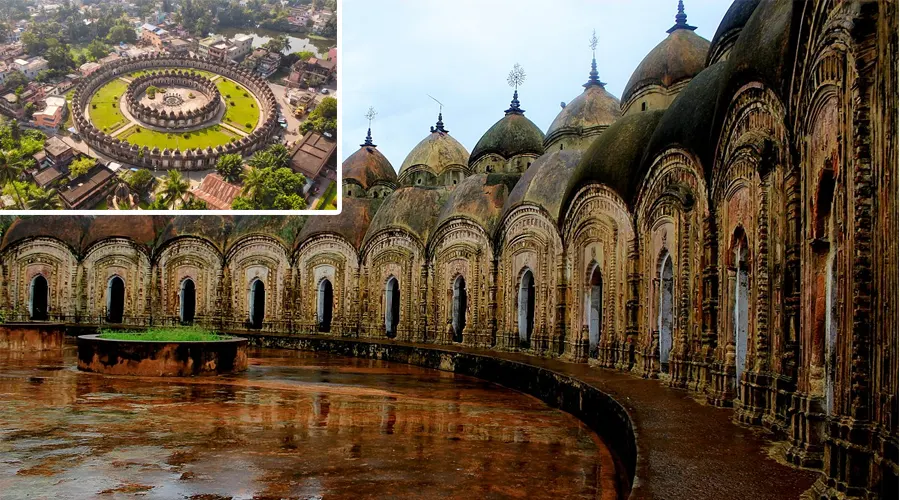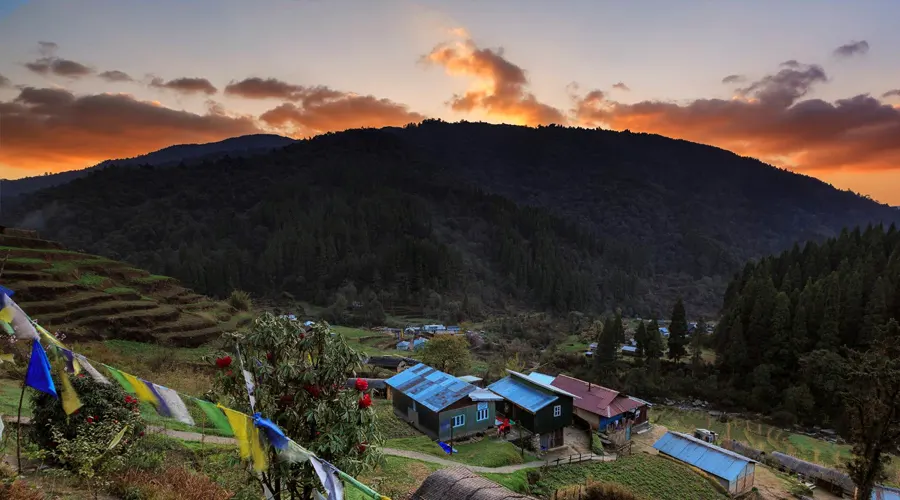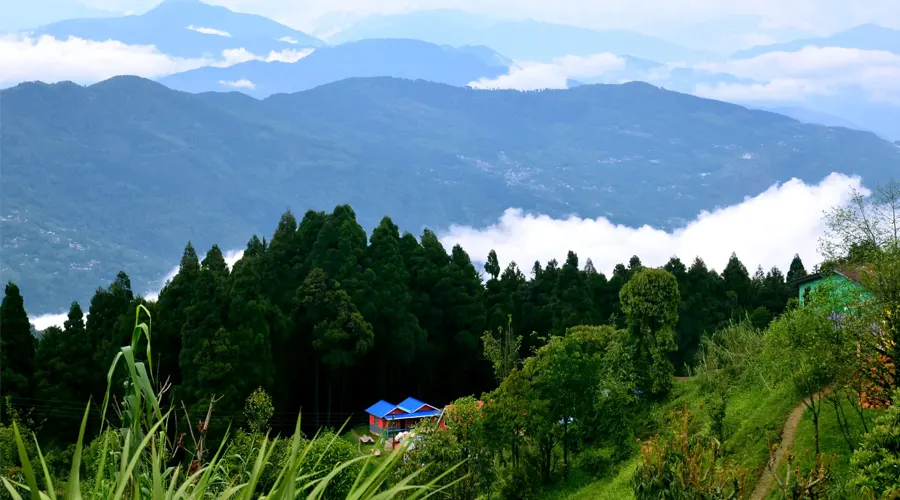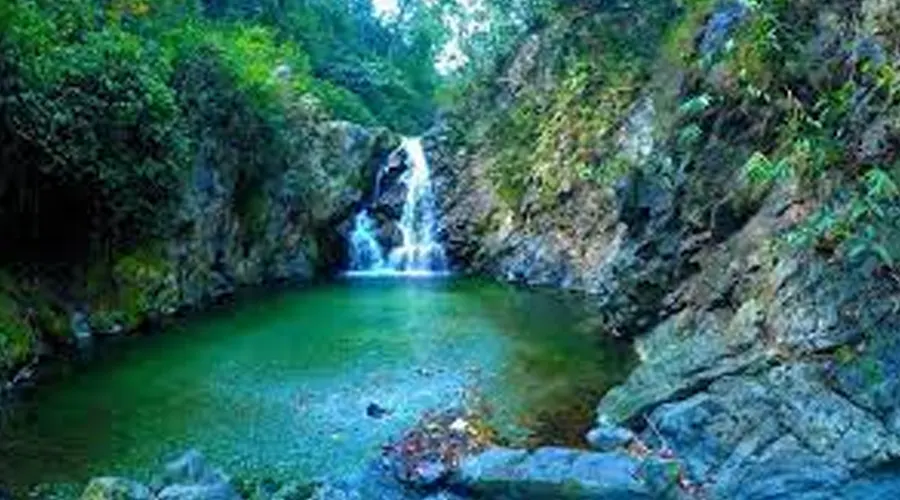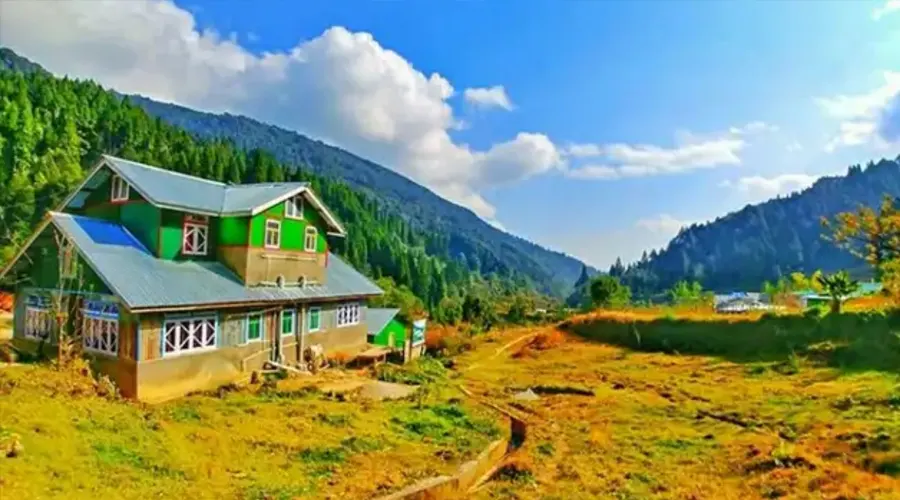Marble Palace
The name Marble Palace speaks for itself, depicting its rich architecture. It is one of the best historical places to visit in Kolkata. Indians and foreign tourists visit this regal building quite frequently. It is sure to capture your attention and leave you awestruck with all the exciting things it has to offer. Don’t forget to check out the pool, picturesque garden, pristine lake, and zoo.
The only colossal structure that stands in a small lane of Muktaram Babu Street of North Kolkata is Raja Rajendra Miullick’s palatial house, popularly known as the Marble Palace.
The façade of the privately-owned mansion is built in neoclassical style, and still continues to be the residence of Rajendra Mullick’s descendants and is considered the most preserved monument of Kolkata.
The mansion is surrounded by sprawling lawns, along with fountains and a private zoo. The galleries of the mansion are overstuffed with statues, portraits, mirrors, chandeliers, and paintings that are by English, Dutch, and Italian artists.
History of Marble Palace
The beautiful 19th-century Marble Palace mansion was built by a rich Bengali merchant, Raja Rajendra Mullick in 1835.
Raja Rajendra Mullick, apart from being a wealthy merchant, also had a penchant for collecting works of art from various places that he visited. The Jagannath temple built within the premises of the palace mansion was built by his father, Sri Nilmoni Mullick, who had adopted Rajendra Mullick as his son. The temple predates the mansion and is still in very good shape, however, it can only be accessed by the members of the Mullick family and is not meant for visitors/tourists.
Architecture of Marble Palace
The Marble Palace Mansion is an architectural masterpiece that was built with a mix of neoclassical style with traditional Bengali elements and additional touches of Chinese style. It was built from superior-quality Italian marble giving the entire structure a look of magnificence. The mansion is built with about 126 different types of marble, picked and chosen from various places in the country to make it an architectural elegance.
The palace is divided into five halls - Reception Hall, Painting Room, Sculpture Room, Billiards Room, and Thakur Dalan (place of worship).
The main façade is built in Neoclassical style with tall fluted Corinthian columns and bas reliefs that open into courtyards that are largely traditional Bengali style. There is a small place of worship for the family, located just adjacent to the courtyard and is also called the “Thakur Dalan”.
The intricate carvings on the marble pillars, floorings, and walls of the palace have a great resemblance to the Mausoleum of Halicarnassus, which was also one of the Seven Wonders of the World. The massive corridors are lined with chandeliers, Victorian furniture, sculptures, and portraits.
The fretwork of the verandas and balconies is inspired by Chinese elements and the sloping roofs are inspired by Chinese-style pavilions.
Marble Palace Mansion Collections
The beautiful decor and art collection of the palace transports its visitors to the Victorian era. Among the exhibits of the mansion museum, there are also sculptures of Praxiteles to Phidias, Venus to Apollo, Homer to Diana and Mosses.
The Victorian furniture, Belgian glassware, game trophies and fine paintings, including originals by Murillo, Reynolds and Rubens are some of the most notable artefacts among the collections of the palace.
It is worth a mention about the music room within the palace building, which has its lavish floor of marble inlay, along with statues of Napoleon and Wellington. The ballroom is still lined with candle chandeliers and silvered glass balls from a collection of original 19th-century disco balls that spread illumination of the chandeliers.
The palace houses 76 rare artworks brought in 1830 all the way from Italy and Belgium which makes it a treasure trove of valuable artefacts collected over the past 180 years. A massive Japanese bronze vase in the doorway has full potential of grabbing immediate attention of any visitor. The full length Belgian glass mirrors that adorn the walls give more depth to the ambience of the place.
Additionally, there is a two-cornered biocome that is said to have belonged to Napoleon Bonaparte which he wore during his military campaigns. It is rumored to be an original one but no one is very sure since the origin or details of it being transferred to India is still shrouded with doubts and questions.
Apart from western sculptures, chandeliers, rustic furniture and other artefacts and decorative objects, the reception hall also exhibits sculptures that depict seasons, times of the day, and lessons from Italian and British schools. Some, if not all of these, are replicas of the originals.
The painting room of the mansion is a dimly lit room, which houses an array of originals from several noted painters including two from that of Sir Joshua Reynolds’ collection- “The Infant Hercules Strangling the Serpent” and “Venus and Cupid”. The other paintings from the collection is from Indian artist, Raja Ravi Varma, the Dutch painter, Jan Van Goyen, Giovanni Battista Salvi da Sassoferrato, the Italian painter as well as Rubens and Piero del Pollaiolo.
Even though the art pieces are lavish and depict the charm and regality of the bygone era, the placement of the artefacts seem to be a bit out of the world or rather, very random without putting much thoughtfulness.
The splush green lawn that spreads all around the palace mansion has a few statues scattered all over. Most of the statues are of Gods from every faith and religion as well as few exotic animals. A marble fountain is placed at the centre of the lawn along with the statue of “Leda and the Swan”.

